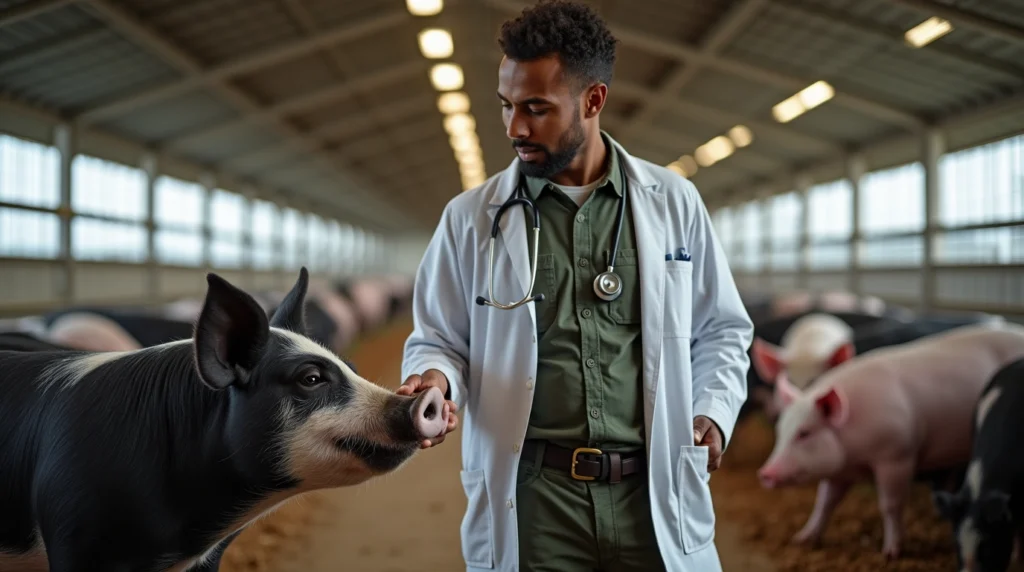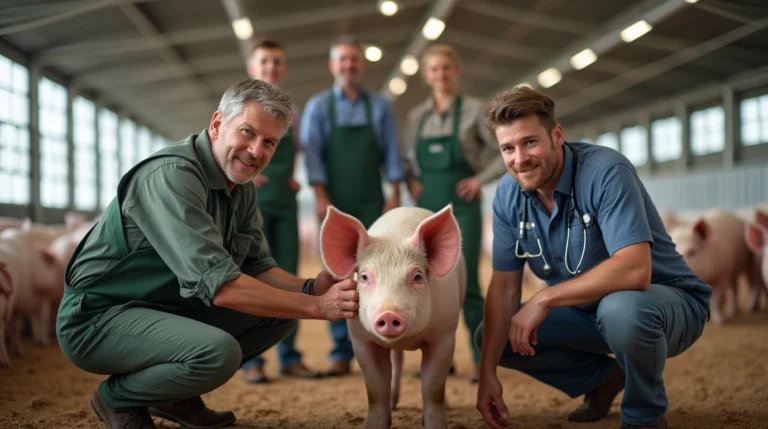Protect your swine herd from devastating bacterial infections in pigs, with expert prevention and treatment strategies. Learn crucial tips to maintain pig health and farm productivity.

Table of Contents
Bacterial infections pose a significant threat to pig farming operations, potentially causing substantial economic losses and compromising animal welfare. As a pivotal component of livestock management, understanding and implementing effective prevention and treatment strategies is crucial for farmers seeking to maintain a healthy and productive swine herd.
Understanding Bacterial Infections in Pigs
What Are Bacterial Infections?
Bacterial infections in pigs are pathogenic conditions caused by various bacterial species that can impact animal health, growth, and overall farm productivity. These infections can range from mild respiratory issues to severe systemic diseases that can decimate entire herds.
Common Bacterial Pathogens in Swine
- Streptococcus suis
- Actinobacillus pleuropneumoniae
- Mycoplasma hyopneumoniae
- Escherichia coli
- Salmonella
6 Essential Prevention and Treatment Tips for Bacterial Infections in Pigs
1. Implement Strict Biosecurity Measures
Key Biosecurity Strategies
- Limit visitor access to pig facilities
- Use dedicated farm clothing and footwear
- Implement quarantine protocols for new animals
- Maintain rigorous cleaning and disinfection routines
2. Optimize Nutrition and Immune Support
Nutritional Considerations
- Provide balanced, high-quality feed
- Include immune-boosting supplements
- Ensure proper vitamin and mineral intake
- Maintain consistent water quality
Recommended Nutritional Supplements
| Supplement | Potential Benefits | Recommended Dosage |
| Zinc | Immune system support | 100-150 ppm |
| Vitamin E | Antioxidant properties | 50-100 IU/kg |
| Selenium | Immune function | 0.3 ppm |
3. Develop a Comprehensive Vaccination Program
Vaccination Strategies
- Consult veterinary professionals
- Create a tailored vaccination schedule
- Regularly update vaccination protocols
- Monitor vaccine effectiveness
4. Maintain Optimal Housing Conditions
Environmental Management
- Ensure proper ventilation
- Control humidity levels
- Manage temperature consistently
- Implement effective waste management
- Prevent overcrowding
5. Regular Health Monitoring and Early Intervention
Monitoring Techniques
- Conduct daily health inspections
- Track weight and growth patterns
- Look for early infection signs
- Maintain detailed health records
- Perform periodic veterinary examinations
6. Responsible Antibiotic Usage
Antibiotic Management Guidelines
- Use antibiotics judiciously
- Follow veterinary prescriptions
- Avoid prophylactic overuse
- Implement rotation strategies
- Monitor antibiotic resistance
Recommended Products on Amazon
Pig Health Care Products
- Farm-Strength Disinfectant Concentrate
- Digital Thermometer for Livestock
- Veterinary-Grade Electrolyte Supplement
- Professional Pig Health Monitoring Kit
Frequently Asked Questions (FAQ)
Q1: How quickly can bacterial infections spread in a pig herd? Bacterial infections can spread rapidly, potentially affecting an entire herd within days if not promptly addressed.
Q2: Are some pig breeds more susceptible to bacterial infections? Certain breeds and younger pigs with developing immune systems are more vulnerable to bacterial infections.
Q3: What are the most common signs of bacterial infections in pigs? Common signs include fever, reduced appetite, respiratory difficulties, lethargy, and decreased growth rates.
Q4: How expensive are bacterial infection treatments? Treatment costs vary but can range from $50 to $500 per pig, depending on the infection’s severity and required interventions.
Q5: Can bacterial infections be prevented entirely? While complete prevention is challenging, implementing comprehensive management strategies significantly reduces infection risks.
Call to Action
Farmers seeking expert guidance on pig health management can explore comprehensive resources at BlithePet for professional recommendations and advanced livestock care strategies.
Conclusion
Successful management of bacterial infections in pigs requires a multifaceted approach combining preventive strategies, nutrition, monitoring, and professional veterinary guidance. By implementing these six critical tips, farmers can substantially mitigate infection risks and maintain a healthy, productive swine herd.
Share Your Experience: Have you encountered challenges with bacterial infections in your pig farming operation? Share your insights and strategies in the comments below!





